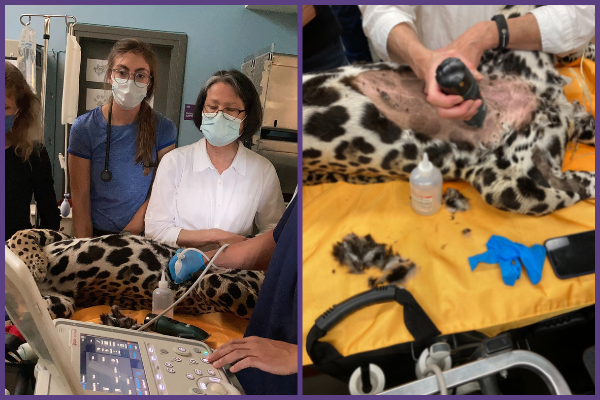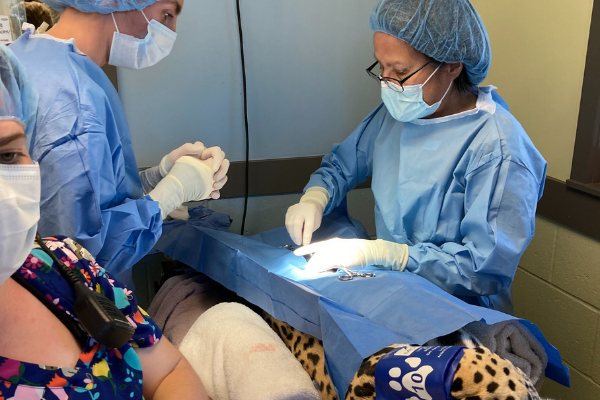
- VisitSupport Happy HollowDONATE TODAYExploreSupport Happy HollowDONATE TODAYLearnSupport Happy HollowDONATE TODAYSupport
-
Today's Hours: 10:00 am to 5:00 pm
Happy Hollow Blog
An Update on Jaguars Kianto and Sophia
November 5, 2021

Kianto
On Wednesday, Nov. 3, the Happy Hollow animal care team made the difficult decision to humanely euthanize Kianto the Jaguar. He was 15 ½ years old. As we shared in our previous blog, Kianto had been struggling with severe age-related arthritis in his elbows as well as an acute injury to his left forelimb. His condition declined rapidly over the weekend and zookeepers observed him having great difficulty standing and moving around over even short distances. Kianto was already on a high dose of pain medication, and a thorough welfare assessment led to the conclusion that even if further treatment was attempted and successful, it would not be able to return him to an acceptable quality of life over the long term. A decision like this is always difficult to make, but Kianto’s care team was confident that it was the best choice for him in order to spare him pain and suffering. X-rays performed on-site showed the acute injury to his forelimb to be an ulnar fracture and revealed compressed vertebrae that were likely the cause of pain in his hind end. A thorough necropsy will be performed at UC Davis.
Kianto came to Happy Hollow from Lincoln Park Zoo in 2017 through the jaguar Species Survival Plan and has been a visitor favorite ever since. A Happy Hollow volunteer summed up Kianto’s relationship with his keepers and the public at Happy Hollow perfectly in one word: “adored.” He will be remembered as a charismatic ambassador for his species who inspired Happy Hollow visitors to learn about and support jaguar conservation.

Sophia
On Thursday, Nov. 4, Sophia the jaguar received a follow-up exam to diagnose the abnormality observed in the area of her reproductive system and determine the status of her anemia. A team of four veterinarians, a radiologist and Happy Hollow’s vet tech and animal care team was assembled and prepped for all anticipated scenarios. Sophia was anaesthetized in her night house and transported to Doc’s Critter Care, where the team would be able to move her into surgery immediately if it was determined to be necessary.

The first step was a detailed ultrasound with the radiologist, who was able to determine that the abnormality the previous team had observed was either a uterine mass or a pyometra (infection in the uterus). The team quickly determined that the best course of action was to surgically remove the mass and the rest of Sophia’s reproductive system through a spay, and immediately prepped Sophia for the procedure. A successful two-hour surgery removed Sophia’s uterus and confirmed a pyometra. An ovarian cyst was found as well, and both ovaries were removed to prevent future complications. Blood samples taken during the process showed that her anemia is improving.

Sophia was carefully transported back down to her night house after the surgery, where she is currently resting comfortably and recovering. Her care team reported on Friday morning that she is doing well and in good spirits. As her recovery progresses, her veterinary team will come back together to determine the best course of treatment moving forward. Sophia will remain off exhibit for a time while her surgical incision heals.